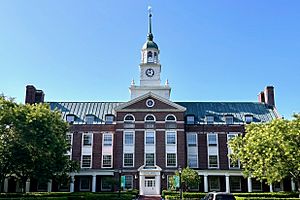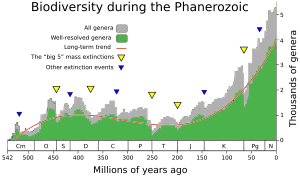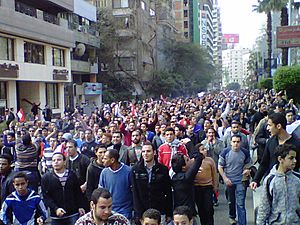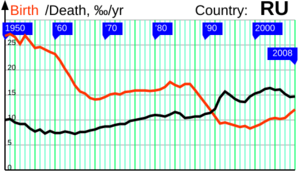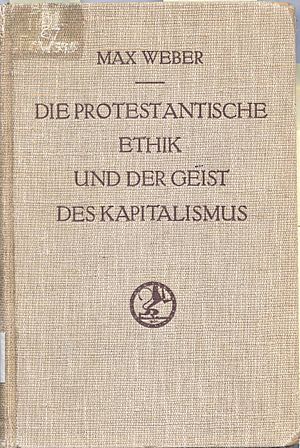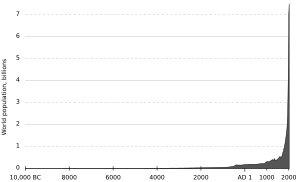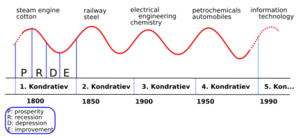Andrey Korotayev facts for kids
Quick facts for kids
Andrey Korotayev
|
|
|---|---|
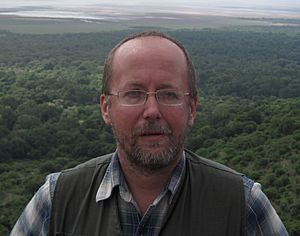
Korotayev over the Rift Valley, North Tanzania, November 2008
|
|
| Born | 17 February 1961 Moscow, Soviet Union
|
| Nationality | Russian |
| Alma mater | Moscow State University |
| Known for | contributions to mathematical modelling of the World System development and cross-cultural studies |
| Awards | Russian Science Support Foundation Award in "The Best Economists of the Russian Academy of Sciences" nomination (2006) In 2012 he was awarded with the Gold Kondratieff Medal by the International N. D. Kondratieff Foundation. |
| Scientific career | |
| Fields | cross-cultural studies, mathematical modelling of social, economic, and historical dynamics; Islamic and pre-Islamic history |
| Institutions | HSE University (Moscow) Russian Academy of Sciences (Moscow) Institute for Advanced Study(Princeton) Russian State University for the Humanities (Moscow) |
Andrey Vitalievich Korotayev (Russian: Андре́й Вита́льевич Корота́ев; born on February 17, 1961) is a Russian scientist. He studies how societies change over time. His work combines different fields like history, economics, and population studies.
He is a leading expert in understanding global changes and how different cultures interact. He uses math to create models that explain big historical trends. Mr. Korotayev works at several universities and research centers in Moscow. He helps lead important research programs. He also helps edit journals like Social Evolution & History.
Contents
Education and Career
Andrey Korotayev was born in Moscow. He studied at Moscow State University and earned his first degree in 1984. He later received a PhD from Manchester University in 1993. In 1998, he earned a higher degree, a Doctor of Sciences, from the Russian Academy of Sciences.
Since 2000, he has been a professor and director at the Russian State University for the Humanities. He also works as a senior research professor at the Russian Academy of Sciences. From 2003 to 2004, he was a visiting scholar at the Institute for Advanced Study in Princeton, NJ.
Mr. Korotayev has received awards for his work. In 2006, he won an award from the Russian Science Support Foundation. In 2012, he was given the Gold Kondratieff Medal.
Key Contributions to Science
Andrey Korotayev has made important discoveries in several areas. He uses scientific methods to study how human societies change.
Mathematical Models of Change
Mr. Korotayev uses math to understand how populations and economies grow. This field is called Cliodynamics.
Global Population Growth
He has studied how the world's population grew very quickly until the 1970s. He found that this growth was linked to how fast the world's economy grew. He created mathematical models to explain these patterns.
Mr. Korotayev and his team showed that technology and population growth affect each other. More people can lead to more inventions. More inventions can support more people. This creates a cycle of faster growth. He also showed that cities grew in a similar fast way. He has made predictions about how the world might develop until 2100.
Evolution of Life and Societies
Mr. Korotayev also looked at how life on Earth has changed over long periods. He found that the increase in different types of plants and animals follows a similar pattern to human population growth. This suggests that similar rules might apply to both biological and social evolution. He believes that the overall complexity of Earth has grown in a similar way for billions of years.
Understanding Social Upheavals

Mr. Korotayev has developed models to study long-term changes in societies. He looked at how population changes can lead to social unrest. He studied the 2011 Egyptian Revolution using these models. He also predicted the protests that happened in Egypt in 2013.
He and his colleague Peter Turchin studied how population growth can lead to conflicts. They found that population numbers and conflicts often go up and down together. When populations grow too much for the available resources, it can cause problems. This can lead to social unrest and even wars. They showed that these patterns can be seen in historical examples like ancient China and the Roman Empire.
Russian Population Changes
Mr. Korotayev has also studied population changes in Russia. He and his team looked at why Russia's population declined in the 1990s and early 2000s. They found that certain factors greatly affected death rates. They also made predictions about future population trends in Russia.
Education and Economic Growth
Mr. Korotayev and his team studied how Protestantism might have helped countries develop capitalism. They found that it wasn't just about a "Protestant work ethic." Instead, it was about promoting reading and education. Protestants were encouraged to read the Bible themselves. This led to higher literacy rates in Protestant areas.
Being able to read helped people learn new things and be more innovative. This then helped their economies grow faster. Their research showed a strong link between early widespread reading skills and later economic success.
World System Analysis
Mr. Korotayev has new ideas about the "world-system." This is the idea that all societies on Earth are connected.
How the World System Grew
He believes that the current world-system started around 9,000 BCE. This was when people began farming during the Neolithic Revolution. He says that the center of this system was first in West Asia.
His approach focuses on how new ideas and technologies spread. If a society regularly adopts new inventions from others, it's not developing alone. It's part of a bigger system where ideas are shared. He thinks that the spread of information is the oldest way the world-system became connected. This was even more important than trade or power differences.
He suggests that the rapid growth of the world population after 10,000 BCE happened because the world-system grew. He points out that major inventions like farming, tools, and metals spread across North Africa and Eurasia thousands of years ago. This shows that societies in these areas were already connected and influencing each other.
Global Economic Shifts
Mr. Korotayev and Leonid Grinin have studied the "Great Divergence." This is the period when Western countries became much richer than others. They also looked at the recent "Great Convergence," where developing countries are catching up.
They showed that both these periods are part of the same process of global modernization. Their models consider factors like education and population growth. Mr. Korotayev's research also links these economic shifts to different stages of global population change.
Economic Cycles
He has also studied "Kondratieff waves." These are long economic cycles that last for many decades. He found evidence of these cycles in global economic data. He also found these waves in the history of inventions.
A New Way to Study Social Evolution
Mr. Korotayev's ideas about the world-system suggest a new way to understand how societies evolve. Usually, scientists study simple systems first. But he believes that the clearest patterns can be found by studying the largest system: the entire human world. This means we should look for simple rules that explain big changes across the whole world first.
Cross-Cultural Studies
Mr. Korotayev compares different cultures around the world. He looks for patterns in how societies are organized.
Family Structures and Religion
He found that major world religions have had a big impact on family and social structures. He showed that cultures are not completely independent. He looked at how different religions, especially those from the "Axial Age" (around 800-200 BCE), influenced how societies developed in Eurasia.
Marriage Patterns
He studied why some societies have "matrilocal" residence (where a husband moves to his wife's family) and others have "patrilocal" (where a wife moves to her husband's family). Earlier theories linked this to how much women contributed to food production. However, studies didn't always find a clear link.
Mr. Korotayev showed that women's contribution to food does affect matrilocal residence. But this link can be hidden by other factors, like polygyny (having more than one spouse). When these other factors are considered, the link becomes clear. This means earlier ideas about family structures were mostly right, but the relationships are more complex.
Ancient Stories and Human History
Mr. Korotayev has also studied how ancient stories and myths are connected to human genes. He found that the way certain myths are spread across different places can tell us about ancient human migrations. This helps scientists understand the "deep history" of human populations.
Christianity and Social Change
He studied how the spread of Christianity affected family structures in Europe. He found that deep Christianization helped break down older family systems. He suggests that this change might have helped lead to the development of modern democracy in Europe.
Societies in the Middle East and Africa
Mr. Korotayev has also focused on the history and social systems of the Middle East and Africa.
Marriage in Islamic Cultures
He found that the spread of Islam and Arab culture is strongly linked to a specific type of marriage. This is marriage to a "parallel cousin" (like a father's brother's daughter). He showed that while Islam encourages this, people only widely adopted it when Islamization happened along with Arabization. This research also led to the idea of the "Afrasian Instability Zone."
Studies of Yemen

Mr. Korotayev has studied the ancient cultures of Yemen. He used old writings to understand how their societies changed. He found that clan organizations became stronger in North-East Yemen long ago. He also found evidence of "matrilineal" descent (where family lines are traced through the mother) in pre-Islamic Arabia.
African Development
He and his team have studied population changes in Subsaharan Africa. They looked at how countries in Tropical Africa are trying to overcome challenges to their development.
Origins of Islam
Mr. Korotayev has also researched the beginnings of Islam. He and his colleagues believe that Islam emerged during a time of social and environmental problems in Arabia in the 6th century. Many Arabian kingdoms and chiefdoms were destroyed during this period.
This led to a strong desire for freedom among tribes. At this time, new religious movements appeared. Mr. Korotayev suggests that prophets, like Muhammad, offered a new kind of authority that many Arab tribes were looking for. This helped explain their success.
Selected Publications
Andrey Korotayev has written many books and articles. Here are some of his important works:
- Ancient Yemen (Oxford University Press, 1995)
- World Religions and Social Evolution of the Old World Oikumene Civilizations: A Cross-cultural Perspective (Edwin Mellen Press, 2004)
- Introduction to Social Macrodynamics. Compact Macromodels of the World System Growth (KomKniga/URSS, 2006, with Artemy Malkov and Daria Khaltourina)
- Great Divergence and Great Convergence. A Global Perspective (Springer, 2015, with Leonid Grinin)
- Economic Cycles, Crises, and the Global Periphery (Springer, 2016, with Leonid Grinin and Arno Tausch)
- Islamism, Arab Spring, and the Future of Democracy. World System and World Values Perspectives (Springer, 2019, with Leonid Grinin and Arno Tausch)
- Handbook of Revolutions in the 21st Century. The New Waves of Revolutions, and the Causes and Effects of Disruptive Political Change (Springer, 2022)
Some of his key articles include:
- "Origins of Islam" (1999)
- "Regions Based on Social Structure: A Reconsideration" (2000)
- "A Compact Macromodel of World System Evolution" (2005)
- "Egyptian Revolution: A Demographic Structural Analysis" (2011)
- "A Trap At The Escape From The Trap? Demographic-Structural Factors of Political Instability in Modern Africa and West Asia" (2011)
- "Phases of global demographic transition correlate with phases of the Great Divergence and Great Convergence" (2015)
- "Effects of specific alcohol control policy measures on alcohol-related mortality in Russia from 1998 to 2013" (2015)
- "Great Divergence of the 18th century?" (2018)
- "Education and Revolutions: Why do Revolutionary Uprisings Take Violent or Nonviolent Forms?" (2023)
Edited Books by Andrey Korotayev
He has also edited many books, including:
- Navigating Complexity in Big History. Exploring Periodization Across Cosmic and Biosocial Dimensions (Springer, 2025)
- Terrorism and Political ContentionNew Perspectives on North Africa and the Sahel Region (Springer, 2024)
- Handbook of Revolutions in the 21st Century. The New Waves of Revolutions, and the Causes and Effects of Disruptive Political Change (Springer, 2022)
- New Wave of Revolutions in the MENA Region. A Comparative Perspective (2022)
- The 21st Century Singularity and Global Futures. A Big History Perspective (Springer, 2020)
- History & Mathematics: Big History Aspects (2019)
- Evolution: Evolutionary Trends, Aspects, and Patterns (2019)
- Globalistics and Globalization Studies: Global Evolution, Historical Globalistics and Globalization Studies (2017)
- History & Mathematics: Economy, Demography, Culture, and Cosmic Civilizations (2017)
- Political Demography & Global Ageing (2015)
- Evolution: From Big Bang to Nanorobots (2015)
- Trends and Cycles (2014)
- Teaching & Researching Big History: Exploring a New Scholarly Field (2014)
- Kondratieff Waves: Dimensions and Prospects at the Dawn of the 21st Century (2012)
- Evolution: A Big History Perspective (2011)
- Evolution: Cosmic, Biological, and Social (2011)
- Forecasting and Modeling of Crises and World Dynamics (2010)
- System Monitoring of Global and Regional Risks (2010)
- Evolution: Problems and Discussions (2010)
- History and Mathematics. Evolutionary Historical Macrodynamics (2010)
- Causes of the Russian Revolution (2010)
- System Monitoring. Global and Regional Development (2010)
- History and Mathematics. Processes and Models (2009)
- Hierarchy and Power in the History of Civilizations: Political Aspects of Modernity (2008)
- Hierarchy and Power in the History of Civilizations: Ancient and Medieval Cultures (2008)
- Problems of Mathematical History. Historical Reconstruction, Forecasting, Methodology (2008)
- Problems of Mathematical History. Mathematical Modeling of Historical Processes (2008)
- Problems of Mathematical History. Basics, Information Resources, Data Analysis (2008)
- History and Mathematics. Models and Theories (2008)
- Interethnic Relations in Contemporary Tanzania. The 2005 Field Season of the Russian Multidisciplinary Expedition in the United Republic of Tanzania (2007)
- History & Mathematics: Analyzing and Modeling Global Development (2006)
- History & Mathematics: Historical Dynamics and Development of Complex Societies (2006)
- History and Complexity Studies: Mathematical Modeling of Social Dynamics (2005)
- The Early State, Its Alternatives and Analogues (2004)
- The Moscow School of Quantitative Cross-Cultural Research (2003)
- Alternatives of Social Evolution (2000)
- Civilizational Models of Politogenesis (2000)
- Alternatives Pathways to Civilization (2000)
- Sociobiology of Ritual and Group Identity: A Homology of Animal and Human Behaviour (1998)
- Alternativity of History (1992)
- Archaic Society: Key Problems of Evolutionary Sociology (1991)
Images for kids
See also
 In Spanish: Andréi Korotáyev para niños
In Spanish: Andréi Korotáyev para niños


